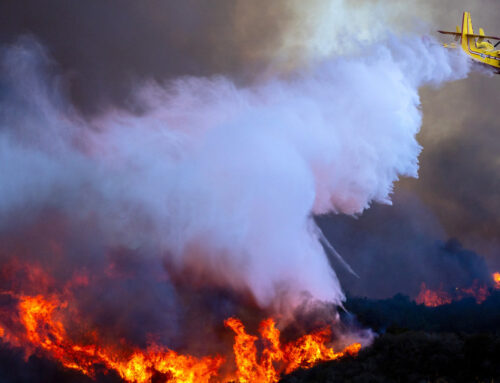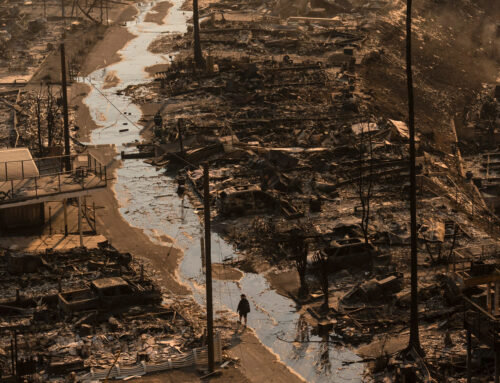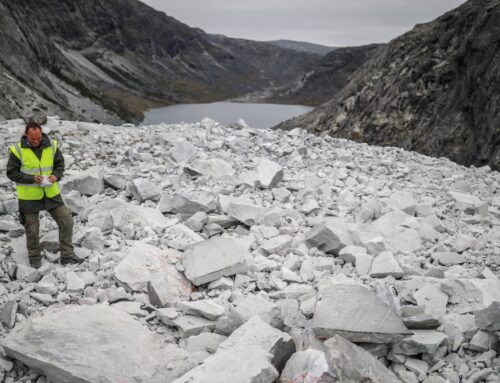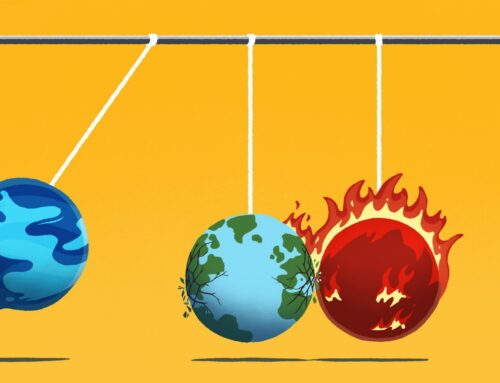LA fires were larger and more intense because of planet-warming pollution, scientists report
January 15, 2025
CNN
—
The fires that have ravaged Los Angeles over the past week were larger and burned hotter than they would have in a world without planet-warming fossil fuel pollution, a new analysis suggests.
Climate change could be blamed for around 25% of the fuel available for the fires, according to the rapid research from scientists at the University of California, Los Angeles. The report is clear in saying the fires likely still would have occurred in a world without climate pollution, but it concludes they would have been “somewhat smaller and less intense.”
The result raises the question of whether the fires could have been controllable were it not for the fire-fueling effects of climate change. The UCLA scientists refer to their analysis as a “starting point” for deeper studies.
Twelve fires have ignited in the Los Angeles area since January 7, when a once-in-a-decade Santa Ana wind storm blew across Southern California’s drought-parched landscape. Since then, more than 60 square miles have been charred and more than 12,000 structures have burned, such as homes, businesses, sheds and garages.
Four days after they began, the Eaton and Palisades fires had grown enough that CalFire ranked them the first and second-most destructive in Southern California history.
Some of the climate-related factors that contributed to the increase in available fire fuel were the excessive moisture of previous winters, Southern California’s abnormally warm summer and fall and a severely delayed rainy season so far in the winter of 2024-2025.
Two winters in a row, downtown Los Angeles recorded twice as much rain as a normal winter, researchers noted. This in itself is a calling card of human-caused climate change, which promotes more moisture in the atmosphere, leading to larger rainfall totals in the wettest years. The rain spurred the growth of “substantially more” grasses and shrubs than normal. The vegetation in the Los Angeles region was among the greenest since 2000, they noted.
When the weather pendulum swung over to dry last summer, the grasses and shrubs — what Southern California wildfires feed on — began to dry out. The exceptionally late onset of the rainy season contributed even more to that drying.
Southern California’s status quo is extreme swings between dry and wet, the UCLA researchers noted, but the lack of rainfall since May 2024 was exceptional. At only 0.29 inches of rain between May 1, 2024 and January 8, the period ranks second-driest behind 1962-1963, with records dating back to 1877.
By the time the first fires ignited, the moisture in the dead vegetation was 6th-lowest on record, according to the report.
These massive swings from dry to wet to dry conditions — known as “weather whiplash” — are becoming more frequent as the planet warms due to fossil fuel pollution, CNN previously reported. These swings worsen the severity and chances of hazards like wildfires and flash floods.
While the extremely dry conditions were enough to fuel a dangerous fire, this event was also sparked in part by an unusually strong Santa Ana wind event. The UCLA researchers found the winds were “indeed a highly unusual Santa Ana event, though perhaps not entirely unprecedented.” They also noted there is no physical explanation for how a planet warming due to fossil fuel pollution could lead to more extreme Santa Ana winds.
The researchers concluded that given the clear connection between wildfire size and intensity, and knowing that fires will continue to get worse as the planet warms, the focus should be on “aggressive suppression” during high wildfire risk, strategies to prevent homes from catching fire easily and avoiding high-risk zones when developing new urban areas.
January is typically Southern California’s second-wettest month. February is its wettest. The forecast for Los Angeles suggests the prospect of a completely dry January. At the very least, below-normal rainfall is expected to persist into February.
Search
RECENT PRESS RELEASES
Related Post




